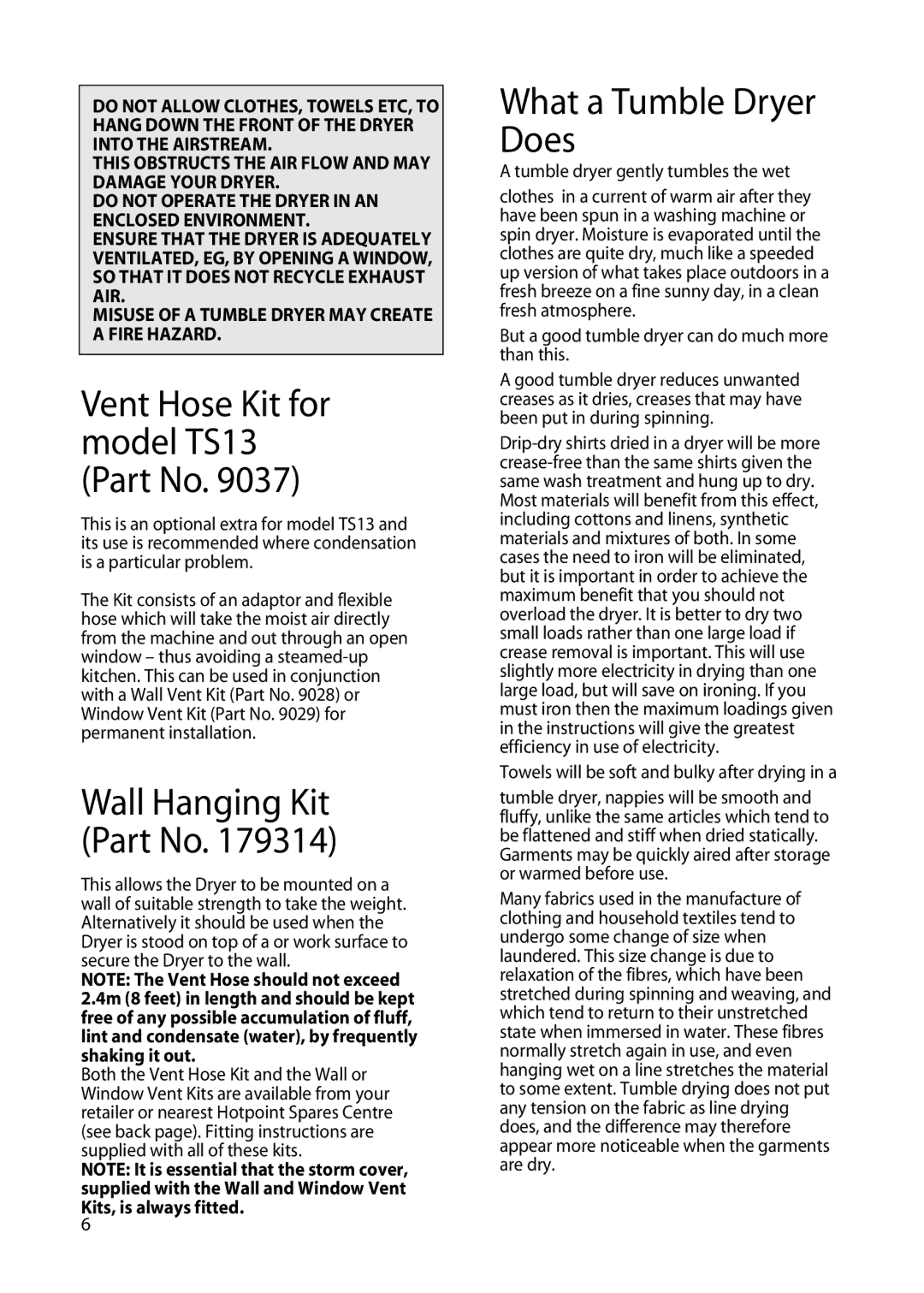
DO NOT ALLOW CLOTHES, TOWELS ETC, TO HANG DOWN THE FRONT OF THE DRYER INTO THE AIRSTREAM.
THIS OBSTRUCTS THE AIR FLOW AND MAY DAMAGE YOUR DRYER.
DO NOT OPERATE THE DRYER IN AN ENCLOSED ENVIRONMENT.
ENSURE THAT THE DRYER IS ADEQUATELY VENTILATED, EG, BY OPENING A WINDOW, SO THAT IT DOES NOT RECYCLE EXHAUST AIR.
MISUSE OF A TUMBLE DRYER MAY CREATE A FIRE HAZARD.
Vent Hose Kit for model TS13 (Part No. 9037)
This is an optional extra for model TS13 and its use is recommended where condensation is a particular problem.
The Kit consists of an adaptor and flexible hose which will take the moist air directly from the machine and out through an open window – thus avoiding a
Wall Hanging Kit (Part No. 179314)
This allows the Dryer to be mounted on a wall of suitable strength to take the weight. Alternatively it should be used when the Dryer is stood on top of a or work surface to secure the Dryer to the wall.
NOTE: The Vent Hose should not exceed 2.4m (8 feet) in length and should be kept free of any possible accumulation of fluff, lint and condensate (water), by frequently shaking it out.
Both the Vent Hose Kit and the Wall or Window Vent Kits are available from your retailer or nearest Hotpoint Spares Centre (see back page). Fitting instructions are supplied with all of these kits.
NOTE: It is essential that the storm cover, supplied with the Wall and Window Vent
Kits, is always fitted. 6
What a Tumble Dryer Does
A tumble dryer gently tumbles the wet
clothes in a current of warm air after they have been spun in a washing machine or spin dryer. Moisture is evaporated until the clothes are quite dry, much like a speeded up version of what takes place outdoors in a fresh breeze on a fine sunny day, in a clean fresh atmosphere.
But a good tumble dryer can do much more than this.
A good tumble dryer reduces unwanted creases as it dries, creases that may have been put in during spinning.
Towels will be soft and bulky after drying in a
tumble dryer, nappies will be smooth and fluffy, unlike the same articles which tend to be flattened and stiff when dried statically. Garments may be quickly aired after storage or warmed before use.
Many fabrics used in the manufacture of clothing and household textiles tend to undergo some change of size when laundered. This size change is due to relaxation of the fibres, which have been stretched during spinning and weaving, and which tend to return to their unstretched state when immersed in water. These fibres normally stretch again in use, and even hanging wet on a line stretches the material to some extent. Tumble drying does not put any tension on the fabric as line drying does, and the difference may therefore appear more noticeable when the garments are dry.
